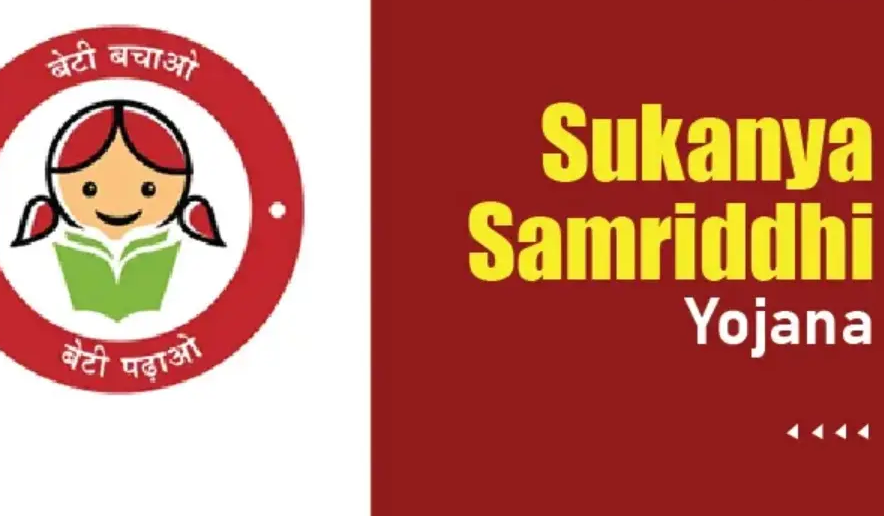Introduction: The Narendra Modi-led government has recently elevated the interest rates for small savings schemes, including the Sukanya Samriddhi Yojana and 3-year Time Deposit. This move is bound to reshape the financial landscape for investors. Let’s delve into the details of these revamped interest rates and what they mean for your savings.

Sukanya Samriddhi Yojana Gets a Boost: In a significant development, the Union Finance Ministry announced a noteworthy hike of 20 basis points in the interest rates for the Sukanya Samriddhi Yojana. This adjustment brings the interest rate to a commendable 8.2%, a welcome increase from the previous 8.0%. This surge is anticipated to benefit numerous investors looking for lucrative avenues for their savings.
Revised Rates for 3-Year Term Deposit: Alongside the Sukanya Samriddhi Yojana, the interest rates for the 3-year Term Deposit have also experienced a positive shift. The rate now stands at 7.1%, up by 20 basis points from the previous 7.1%. This adjustment positions the 3-year Term Deposit as an attractive option for those seeking stable returns in the short term.
Current Small Savings Scheme Landscape: Before diving deeper into these changes, let’s take a comprehensive look at the existing interest rates across various small savings schemes. The recently revised rates for January-March 2024 are as follows:
- Savings Deposit: 4%
- 1-Year Post Office Time Deposits: 6.9%
- 2-Year Post Office Time Deposits: 7.0%
- 3-Year Post Office Time Deposits: 7.1%
- 5-Year Post Office Time Deposits: 7.5%
- 5-Year Recurring Deposits: 6.7% (Previously 6.5%)
- National Saving Certificates (NSC): 7.7%
- Kisan Vikas Patra: 7.5% (Mature in 115 months)
- Public Provident Fund: 7.1%
- Sukanya Samriddhi Account: 8.2%
- Senior Citizens Savings Scheme: 8.2%
- Monthly Income Account: 7.4%
Evolution of Interest Rates: Interestingly, the PPF rates remained unchanged for over three years until this recent adjustment. The Centre’s decision to keep rates stable for the October-December 2023 quarter, with only a marginal increase in five-year recurring deposit rates, set the stage for the current revisions. The move signifies a commitment to adapt small savings interest rates to the dynamic financial landscape.
Tax Benefits and Small Savings Schemes: Small savings schemes offer a dual advantage — they provide attractive interest rates and serve as excellent instruments for saving on income tax. Under Section 80C of the Income Tax Act, individuals can claim deductions of up to Rs 1.5 lakh per year from their taxable income by investing in schemes like PPF, SCSS, NSC, SSY, and the 5-Year Post Office Time Deposit Scheme.
Committee-Driven Rate Adjustments: The interest rates on small savings instruments are recalibrated every quarter based on the market rate for the 10-year government security. A committee, led by former Reserve Bank of India Governor Shyamala Gopinath, has recommended that these rates should be 25-100 basis points higher than the yields of government bonds of similar maturity. This approach ensures that small savings schemes remain competitive and attractive in comparison to other investment options.
Government’s Assertion on Small Savings: Earlier, the NDA government emphasized that the current interest rates on various Small Savings Schemes surpass those offered by fixed deposit schemes in both public and private banks. This reaffirms the government’s commitment to providing investors with competitive returns on their savings.
Conclusion: The recent surge in interest rates for schemes like Sukanya Samriddhi Yojana and the 3-year Term Deposit comes as a welcome development for investors. As small savings schemes continue to evolve in response to market dynamics, staying informed about these changes becomes crucial for those seeking optimal returns. The revised rates not only make these schemes more attractive but also reaffirm the government’s commitment to fostering a financially inclusive environment. Embrace these changes, explore your options, and make informed decisions for a prosperous financial future.